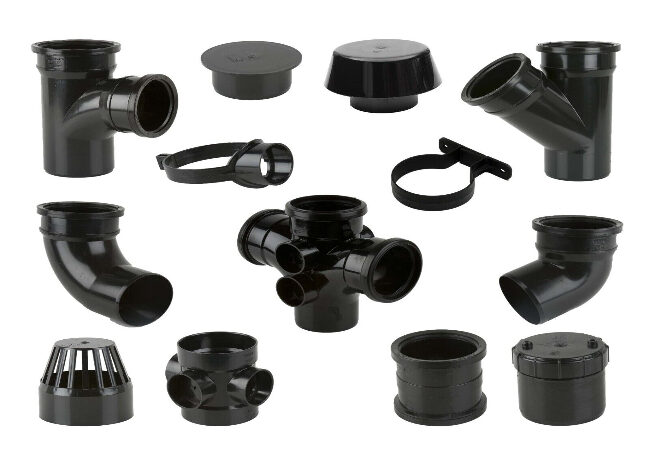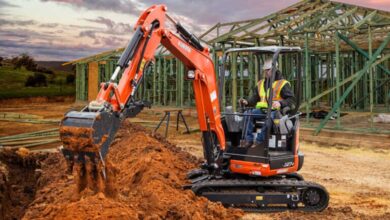Soil Pipe Fittings: Comprehensive Guide for Plumbing Systems
Essential Insights into Soil Pipe Fittings for Leak-Free Plumbing

Soil pipe fittings are critical components in plumbing and drainage systems, enabling the seamless removal of wastewater and sewage from residential, commercial, and industrial buildings. They ensure a secure and leak-free connection between soil pipes and other plumbing fixtures, maintaining hygiene and preventing leaks. Whether it’s a simple household plumbing project or a complex commercial setup, understanding the right soil pipe fittings is crucial for a reliable and efficient system.
Introduction to Soil Pipes and Fittings
Soil pipes are integral to plumbing systems, designed to transport wastewater and sewage from toilets, sinks, and other fixtures to the main drainage or sewer line. Soil pipe fittings connect these pipes to fixtures or other sections, ensuring a tight, leak-proof system. Without these fittings, the plumbing system would fail to function efficiently, leading to potential hygiene hazards and structural damage.
Types of Soil Pipe Fittings
Understanding the variety of soil pipe fittings is essential for selecting the right components for your plumbing system. Here are the most common types:
Elbows (Bends)
Elbows allow soil pipes to change direction. They are available in various angles like 90° or 45°, helping navigate around obstacles.
Tees
Tee fittings enable the connection of three pipes, forming a T-junction. These are vital for branching off the main soil pipe.
Reducers
Reducers connect pipes of different diameters, facilitating transitions between various pipe sizes.
Couplings
Couplings join two straight sections of pipe, providing a continuous connection while preventing leaks.
Vent Pipe Fittings
Vent pipe fittings allow air to enter the drainage system, preventing the siphoning of water traps and ensuring smooth wastewater flow.
Materials Used in Soil Pipe Fittings
The material of the fittings determines their durability, ease of installation, and resistance to wear and corrosion. Common materials include:
- uPVC (Unplasticized Polyvinyl Chloride): Lightweight, cost-effective, and corrosion-resistant. Ideal for modern plumbing systems.
- Cast Iron: Durable and robust, traditionally used in older systems or where strength is a priority.
- Stainless Steel: Known for its high resistance to corrosion and longevity in industrial applications.
- Copper: Often used for its antimicrobial properties and resilience.
Installation Methods for Soil Pipe Fittings
Push-Fit Systems
Push-fit systems are popular for uPVC pipes due to their quick and easy assembly without requiring adhesives or welding.
Solvent Welding
This method uses a solvent to chemically bond the fitting to the pipe, creating a permanent joint.
Mechanical Couplings
Frequently used with cast iron pipes, these couplings provide a secure connection without the need for welding.
Compression Fittings
Compression fittings create a watertight seal by compressing a rubber gasket, ideal for DIY projects.
Toilet Soil Pipe Fittings Explained
Toilet soil pipe fittings are specialized components designed to connect toilets to the main soil pipe. These fittings are crucial for preventing odors, ensuring efficient waste removal, and complying with local plumbing codes.
Key Features of Toilet Soil Pipe Fittings:
- Flexible Connectors: Allow easy alignment between the toilet outlet and the soil pipe.
- Pan Connectors: Join the toilet’s waste outlet to the soil pipe, ensuring a leak-free connection.
- Offset Bends: Enable adjustments when pipes and toilet outlets are misaligned.
Proper installation of toilet soil pipe fittings is vital for avoiding leaks, blockages, and unpleasant odors.
Common Issues and Maintenance Tips
Leakage
Over time, soil pipe fittings may develop leaks due to wear or improper installation. Regular inspections can help identify and fix these issues promptly.
Blockages
Blockages in soil pipes can disrupt the drainage system. Prevent them by avoiding the disposal of non-biodegradable items into the system.
Corrosion
Metal fittings, especially those made from cast iron, may corrode. Replace corroded fittings with modern, corrosion-resistant alternatives like uPVC.
Maintenance Tips:
- Schedule routine inspections of the plumbing system.
- Use high-quality fittings to enhance system longevity.
- Promptly address any visible cracks or leaks.
Choosing the Best Soil Pipe Fittings for Your Project
Selecting the right soil pipe fittings depends on several factors:
- Pipe Material Compatibility: Ensure fittings match the material of the soil pipes.
- Local Building Codes: Adhere to regulations for compliance and safety.
- Project Requirements: Choose durable materials for long-term applications or lightweight options for temporary setups.
Consulting a plumbing professional can help you make informed decisions tailored to your specific needs.
Conclusion
Soil pipe fittings play an indispensable role in ensuring the efficient functioning of plumbing systems. From maintaining hygiene to preventing structural damage, these fittings are vital for any building’s drainage system. Whether you’re tackling a DIY project or managing a large-scale construction, understanding soil pipes and fittings, including toilet soil pipe fittings, will empower you to make informed choices. By using the right materials and following proper installation practices, you can ensure a durable, leak-free plumbing system that stands the test of time.
This comprehensive guide equips you with the knowledge needed to navigate the world of soil pipe fittings confidently, ensuring your plumbing system operates at its best.



